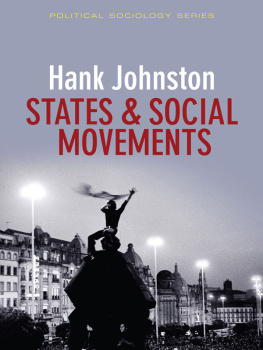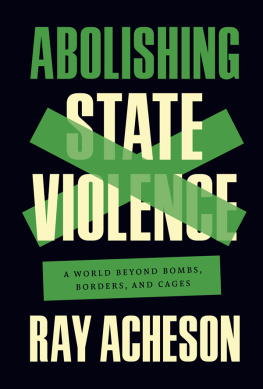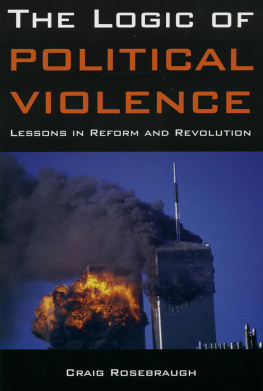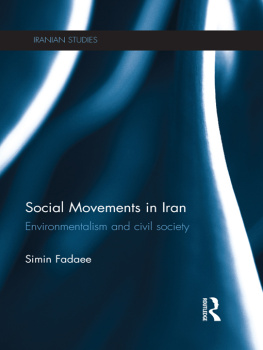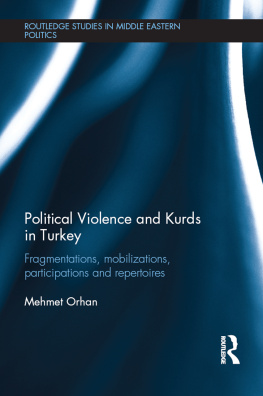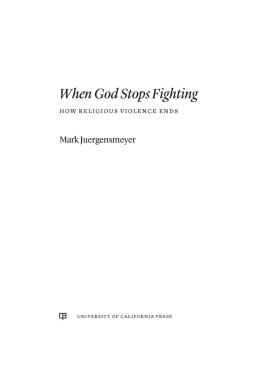Millennialism and Violence
Cass Series on Political Violence
Series Editors - DAVID C. RAPOPORT, University of California, Los Angeles
PAUL WILKINSON, University of St Andrews, Scotland
- Terror from the Extreme Right , edited by Tore Bjrgo
- Millennialism and Violence, edited by Michael Barkun
- Violence in Southern Africa , edited by J.E. Spence
- April 19 and Right-Wing Violence in America , edited by David C. Rapoport
Millennialism and Violence
Edited by Michael Barkun
First published in 1996 in Great Britain by
FRANK CASS & CO. LTD.
2 Park Square, Milton Park,
Abingdon, Oxon, OX14 4RN
and in the United States of America by
FRANK CASS
270 Madison Ave,
New York NY 10016
Transferred to Digital Printing 2005
Copyright 1996 Frank Cass & Co. Ltd.
British Library Cataloguing in Publication Data
Millennialism and Violence. (Cass Series on Political Violence; No.2)
I. Barkun, Michael II. Series
322.42
ISBN 0-7146-4708-X (cloth)
ISBN 0-7146-4250-9 (paper)
Library of Congress Cataloging in Publication Data
A catalog record for this book is available from the Library of Congress.
All rights reserved. No part of this publication may be reproduced in any form or by any means, electronic, mechanical, photocopying, recording or otherwise, without the prior permission of Frank Cass and Company Limited.
Typeset by Frank Cass and Company Limited
Contents
David C. Rapoport
|
Michael Barkun
|
Dick Anthony and Thomas Robbins
|
Reinaldo L. Roman
|
Jean E. Rosenfeld
|
Martha F. Lee
|
Jeffrey Kaplan
|
Thomas Flanagan
|
|
Millennialism and Violence is the second volume of the Cass Series on Political Violence, an appropriate successor to Tore Bjrgo's Terror from the Extreme Right which contained several studies of contemporary millenarian groups. Michael Barkun, a preeminent interpreter of millenarianism, has organized his volume to focus more directly on the millenarian ethos itself. This is a topic of some importance in the history of terror. Prior to the French Revolution, terror was invariably justified by religious visions, and more often those visions were millenarian, and it cannot be surprising that the revival of religious intensity in the 1960s once again demonstrated the importance of coming to grips with the millenarian ethos.
Millenarianism is not confined to the religious experience, Friedrich Engels was the first of a long line of commentators to note that the millenarian ethos has important manifestations in secular movements, especially on the left. Left-wing secular millenarianism reached a modern high-point in the 1960s and 1970s and has declined considerably since, but remnants have remained and new elements have emerged, both of which are noted in this volume.
A critical, generally ignored, theme discussed here is the disposition of governments to misunderstand the difficult ways of millenarian groups, misunderstandings which contributed to gruesome but perhaps avoidable tragedies. This is not a new problem. The terror of the Anabaptists in the sixteenth century drove many governments wild with fury until the Dutch learned how to deal with it. But today millenarian groups no longer always come from a particular religious tradition which we can understand; they borrow from very different religious universes. Aum Shinrikyo, for example, the group which made a nerve gas attack on Japanese subways in 1995, combines Hindu, Buddhist and Christian themes in extraordinary ways. This is a feature of the 'global village' which often makes contemporary millenarian activities almost incomprehensible.
David C. Rapoport
December 1995
MICHAEL BARKUN
I. Millennialism and Politics
While the scholarly literature on millenarian movements is vast, Although the connections Cohn made between past and present changed, he continued to maintain that latter-day millennialism took its most politically significant forms in movements that used or threatened violence.
When The Pursuit of the Millennium first appeared in the late 1950s, its story of obscure sectarians seemed little more than the excavation of historical curiosities. Indeed, much of the book's shock value came from Cohn's assertion that this religious exotica somehow spoke to modern concerns about the rise of totalitarianism. While some saw in it a powerful new tool for studying totalitarian ideology (a point Thomas Flanagan discusses in his essay here), millennialism remained for many too far outside conventional political categories to warrant serious examination. These movements that promised the total transformation of the social order attracted students of nativism, sectarianism, and acculturation, but on the whole remained outside the cultural and academic 'mainstream'. During the last 20 years, however, the practice of consigning millennialism to the margins has begun to crumble.
Over the last two decades, the study of millenarian movements has moved from the periphery to the center. No longer the exclusive domain of small coteries of specialists, it has come to be seen as a major category of social analysis, a phenomenon whose expression in often volatile movements lies at the core of many manifestations of violence.
What has produced this shift? Four factors appear principally responsible. First, the growth of Protestant fundamentalism has moved millennialism to the center of religious awareness, particularly in North America. Protestant fundamentalists are almost universally millenarian in their anticipation of the imminent end of history. Whether couched in terms of dispensational premillennialism (for example, Jerry Falwell) or increasingly prevalent postmillennial variations (for example, Pat Robertson and the Reconstructionist movement), fundamentalists have made millennialism the keystone of an influential theological outlook Fundamentalism, however, has been more than a flourishing religious persuasion; it also sees itself as a potent political actor, with the capacity to shape the public agenda on issues that range from abortion to policy in the Middle East.
Second, paralleling the rise of fundamentalism has been the growth of the New Religious Movements, groups that have emerged outside traditional religious categories, to which the pejorative label 'cult' has been popularly applied. These include such groups as the Church Universal and Triumphant, the Church of Scientology, the Hare Krishna Movement, the Unification Church, and hundreds of others. While not all are millenarian, many are developing concepts of total transformation outside well established belief systems.
Third, secular social analysts have increasingly painted an apocalyptic future. While some, such as Francis Fukuyama, Whether these commentators attribute the end to nuclear war, global famine, or a world economic collapse, they present the existing order as fragile and problematic rather than solid and enduring.
Fourth, a succession of dramatic and highly publicized cases involving unusual religious groups, often of a distinctly millenarian sort, has imprinted on public consciousness an awareness of millenarian movements and an identification of them with violence. The article by Thomas Robbins and Dick Anthony sketches the most famous of these cases: the Peoples Temple in Guyana (1978), the Branch Davidians outside Waco (1993), and the affair of the Solar Temple in Canada and Switzerland (1994). As this collection was being prepared, yet another such incident was in process the nerve gas attack on the Tokyo subway in March 1995, which within a few days was unofficially attributed to the apocalyptic sect, Aum Shinrikyo. Saturation media coverage of these sensational events has been in effect a 'crash course' on millennialism for the general public, and has reinforced the belief that such movements intrinsically threaten public order.


